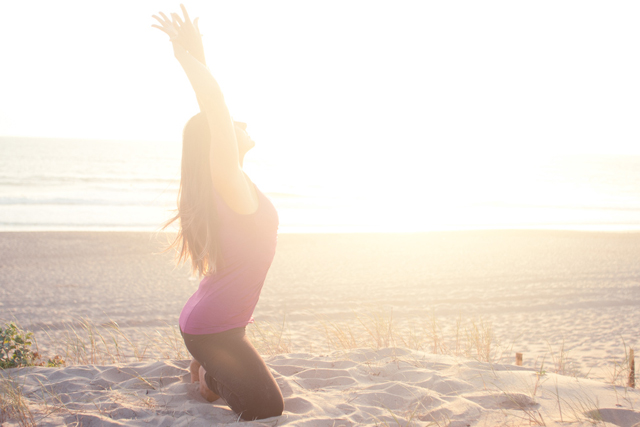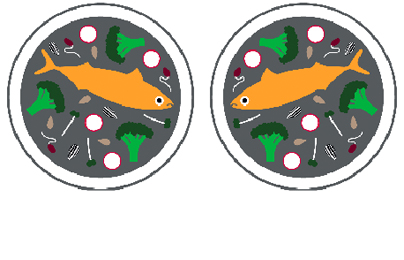
Even though we had this article in the mag a while ago, it’s no less up to date today! So have a read and think twice next time you’re in the drugstore, looking for a new shampoo…
Words by Cordelia Brabbs, illustration by Ruth Roberts
Action sports can be tough on the old looks. While we might aspire to the glossy locks and gorgeous skin of the pros fronting ad campaigns, the reality for most of us in summer is sun-scorched skin, dry hands and parched hair that does a damn good scarecrow impression. Just because we love adrenaline sports doesn’t mean we’re immune to the pressure of media images, so no wonder we’re tempted to stash our beauty bags full of high-tech promise-laden products that offer to give us swishy-soft hair, scrub our thighs smooth, brighten up our skin and have us looking groomed and gorgeous on the beach. The bad news is, these products come with a hefty price to pay – and we’re not just talking moulah.
The majority of mainstream cosmetic and toiletry brands are chemical cocktails that seep their way into your blood stream through your highly absorbent skin – 60 per cent of everything you put on the outside of your body, ends up inside it. Which gets a bit scary when you realise that not only are many cosmetic ingredients derived from the petroleum industry, and are known toxins or hormone disrupters, but that the average woman using several beauty products can be putting 126 different chemicals onto her skin. A day.

“Cosmetic companies claim that the levels of synthetic chemicals in beauty products are too low to be of any concern,” explains Dawn Mellowship, author of Toxic Beauty (available October 2008). “But we don’t just use one product a day, we use a myriad of cosmetics, and are surrounded by other consumer products containing these chemicals.”
Some of the worst culprits can cause short-term irritations, and long-term damage. Sodium laureth sulfate, for example, is a common cosmetic ingredient, best known for making shampoo froth up into a lather. Despite being passed as ‘safe’ by global health agencies, there have been persistent claims that it is carcinogenic, and can irritate skin and eyes in concentrations above five per cent. As labelling laws don’t require a specific concentration, some unscrupulous companies chuck in up to 20 per cent of SLS. Other nasties are parabens, which mimic oestrogen and have been linked breast and testicular cancer, and Phthalates, which disrupt hormones, cause allergies, damage the liver and kidney and affect fertility.
Some organisations argue that the explosion of campaigns to make beauty products safe and natural is simply a marketing scam. Paul Crawford, head of regulatory & environmental services at the Cosmetic, Toiletry, & Perfumery Association (CTPA), states, “In my view the scaremongering about the safety of cosmetics has been done deliberately and is not based on sound science. Consumers have been totally misled.”
But regardless of whether an ingredient is safe or not, surely it makes more sense – and is more appealing – to put a product derived from a fruit or flower on our skins than one also used in coolant fluid for cars.
In any case, humans aren’t the only ones affected by the contents of our beauty bags. Anything that we put on our bodies will find its way into the environment, sometimes directly. In February marine scientists from the Polytechnic University of Marche in Italy unveiled research claiming that chemicals in sunscreens – primarily parabens, cinnamates, benzophenones and camphor derivatives – were activating viruses in coral causing them to die off and ‘bleach’ (when the white coral skeleton is exposed). Which makes looking for natural alternatives even more important for action girls spending long hours in tropical surf spots.
Other pressing environmental issues are massive deforestation in order to harvest palm oil, a major ingredient in beauty products (especially natural ones), and the near extinction of the Indian tiger due to illegal talc mining operations that are destroying its natural habitat (talc is a common ingredient in cosmetics). And that’s not to mention the millions of gallons of chemicals we wash down the drain that end up in our environment, causing birth defects and cancer in wildlife, polluting our oceans and waterways, and contaminating the environment as far away as the Arctic. Even cosmetic packaging is often produced from PVC (polyvinylchloride), linked with the release of carcinogenic dioxins into the environment.
It seems insane that the beauty industry is able to get away with mass pollution of our bodies and our planet. But with £4.5bn a year at stake in the UK alone, it’s hardly going to be quick to give up its profitable recipes of cheap chemicals. As Nanette Pallrand, founder of the all-natural Rich Hippie and Nature Girl brands says, “Consumers are being ripped off by high prices and misled by expensive marketing campaigns on the part of large, conventional beauty companies, who put more money into advertising than the manufacturing of their products.”
 The problem is that the cosmetics business is self-regulating. While other chemical industries such as pesticides and drugs have to go through lengthy evaluation processes, there is no equivalent for toiletries. New European legislation REACH (Registration, Evaluation, and Authorisation of Chemicals) means ingredients will have to be tested by the European Chemicals Agency, but companies have 11 years before registration is enforced, and critics are claiming there are too many loopholes.
The problem is that the cosmetics business is self-regulating. While other chemical industries such as pesticides and drugs have to go through lengthy evaluation processes, there is no equivalent for toiletries. New European legislation REACH (Registration, Evaluation, and Authorisation of Chemicals) means ingredients will have to be tested by the European Chemicals Agency, but companies have 11 years before registration is enforced, and critics are claiming there are too many loopholes.
That means it’s down to consumers to make the switch to natural brands – or even home-made beauty recipes. “It sounds corny,” says Mellowship, “But the people have the power and we need to choose where we put our pennies more wisely.” Amanda Hughes, founder of the Sensitive Skincare Company, agrees. “Over 250 new natural and organic skincare companies appeared in the last six months of 2007. The big companies are being given a run for their money and forced to re-evaluate what they are doing,” she says.
But making a difference is not as clear-cut as simply switching to a product that has the word ‘natural’ stamped on its packaging. Lack of regulations mean brands can call themselves natural even if only a tiny percentage of the ingredients are plant-based. That means extracts of a soothing essential oil could be mixed up with carcinogenic toxins. Likewise, a beauty product can legally call itself organic if just one of ingredients are produced without pesticides – leaving scope for the rest of the mix to be just another chemical cocktail. There’s also an issue around how ‘natural’ plant-based products are anyway.
Paul Crawford argues, “Even natural ingredients are made of chemicals – nature produces the most potent toxins known to man. And what most consumers also don’t realise is that synthetic chemicals must be used to manufacture most organic and natural cosmetics.”
Confused? Then look for the logos showing you stringent rules have been applied – ECOCERT and Soil Association for natural and organic standards respectively, and BUAV for animal-friendly status. But as it’s so expensive to get certified, many small but totally natural and ethical brands simply can’t afford it. The only fail-safe way to buy beauty products is to get savvy about ingredients listings, and don’t be shy about emailing companies to ask about their eco credentials.
Alternatively, keep your beauty habits as simple as possible and opt for totally natural products that are good for you and the Earth. Coconut oil is great for hydrating skin and hair, and a simple bottle of rosehip oil will nourish your face better than any hyped-up moisturiser. Make like Brazilian beach babes and exfoliate your thighs and bum with wet sand to beat cellulite, and keep an aloe vera plant on hand to soothe sun-scorched skin after a long surf.




